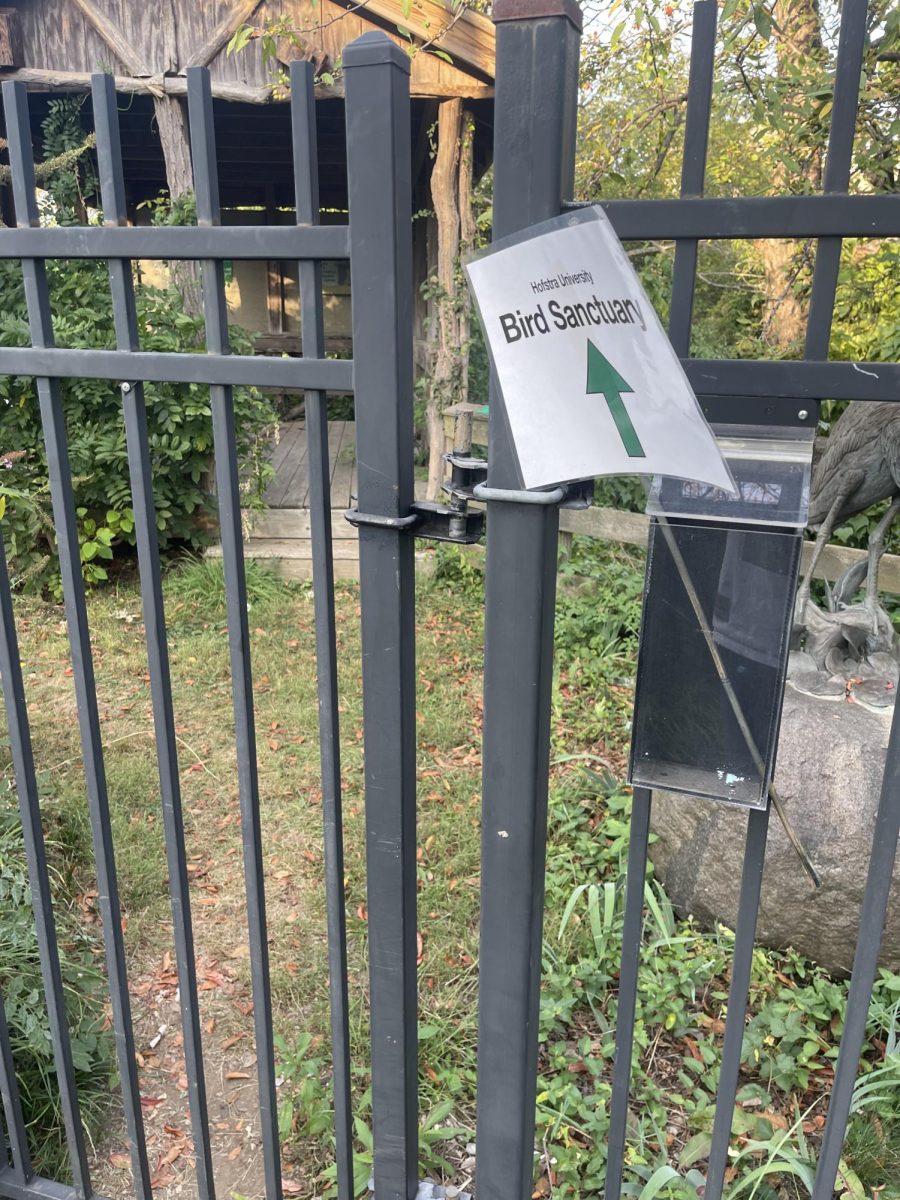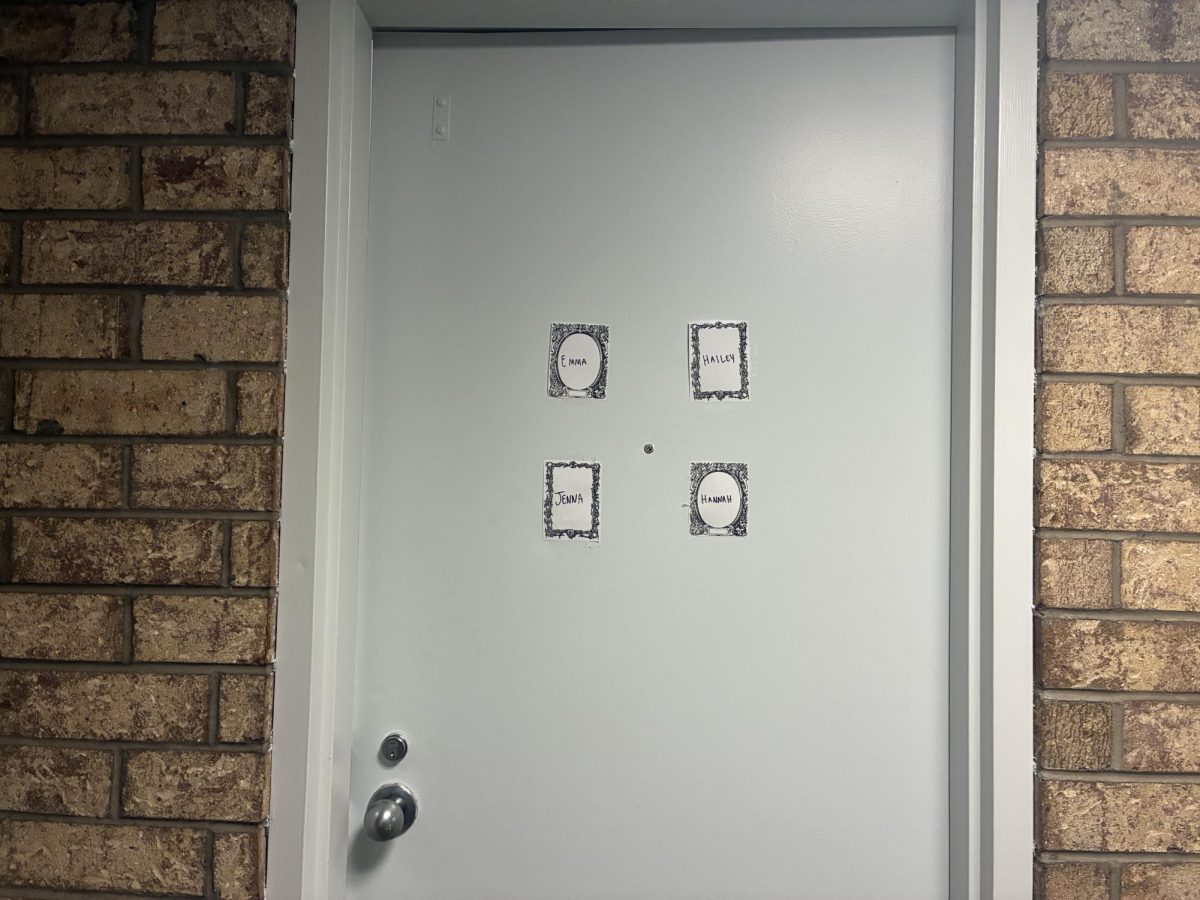The bird sanctuary is possibly the prettiest part of campus. It is a picturesque, tranquil little location featuring trees and plants, a waterfall and gazebo. In a campus that can often feel a bit suffocating in its bustling nature, filled with heavy amounts of traffic, paved walkways and modern buildings, the bird sanctuary is a serene escape – if you can get in, that is.
I attempted to enter the bird sanctuary to review the location, and it was closed (as it often is). I couldn’t find any information online about the sanctuary’s open hours, and I tried to call the phone number on the sign at the entrance and nobody answered. Considering that I revisited it multiple times during the week, it seems to be closed completely for the time being. The entrance gate is locked, making it inaccessible if you aren’t daring or athletic enough to hop the black fence that encases its perimeter.
While I was unwilling to blatantly trespass for the sake of this review, I did walk the perimeter of the fence, hoping to see an open entrance, to no avail. On my walk, it became apparent to me that the sanctuary would not be open anytime soon due to its neglected state. There was overgrown brush, a stack of planter boxes knocked onto the ground, a bench that had long pieces of scrap metal sitting on it and the place was littered with trash.
Along with it being closed so often, the sanctuary resides in a sort of hidden location on North campus right next to the Donald and Barbara Zucker School of Medicine, which is completely out of the way of the path that most campus residents would take to class. The area is boxed in by tall trees and is unassuming until you walk up to it. Due to its closed status and hidden location, the bird sanctuary is somewhat unknown to the student population and is very infrequently visited, which is a shame because the sanctuary itself is incredible.
Despite the state that the bird sanctuary is currently in, I still remember how beautiful it was to visit two years ago when I was a freshman. My Culture and Expression professor took my class to read nature poems, and the experience was truly magical. I returned several times that year, using the sanctuary as a place to seek solitude. There were some nice man-made additions to it too that made the experience more comfortable without detracting from the nature-feel such as wooden walkways, stars, a gazebo and wooden benches. The pond and waterfall add to the view and create some very pleasant white noise that improves the whole sensory experience.
While the bird sanctuary is quite lovely, I will concede that some of its magic comes from the scarcity of true nature spots close by. While there is nature on campus, it exists in the form of plants and trees that are only accents, and the residential side of campus is especially sparse. While the plants and trees are pretty, they don’t give the feeling of being in nature, as they are surrounded by all of the man-made structures on campus, but the bird sanctuary feels truly secluded.
For those of us from other parts of the country, the adjustment to the strip-mall and highway-heavy Hempstead area is especially difficult without any nature spots that are conveniently and safely accessible from campus. Even with a car, the options close by aren’t plentiful. The scarce woods and trails nearby, such as the Hempstead Lake Loop, are so overrun with joggers and dog walkers that your experience is completely stunted, and you will leave agitated by the lack of peace and quiet that nature typically promises. It is quite ironic that the bird sanctuary is the best nature spot nearby considering that the idea of a bird sanctuary isn’t all that natural itself.
While I do understand why the school would neglect an expensive hidden nature spot that doesn’t directly make them money, I think it is absolutely worth it to have, as it would improve the quality of life here to have more pretty and secluded spots on campus. If there is money in the budget, it is worth it to direct some fixing and maintaining the bird sanctuary to keep it open.







